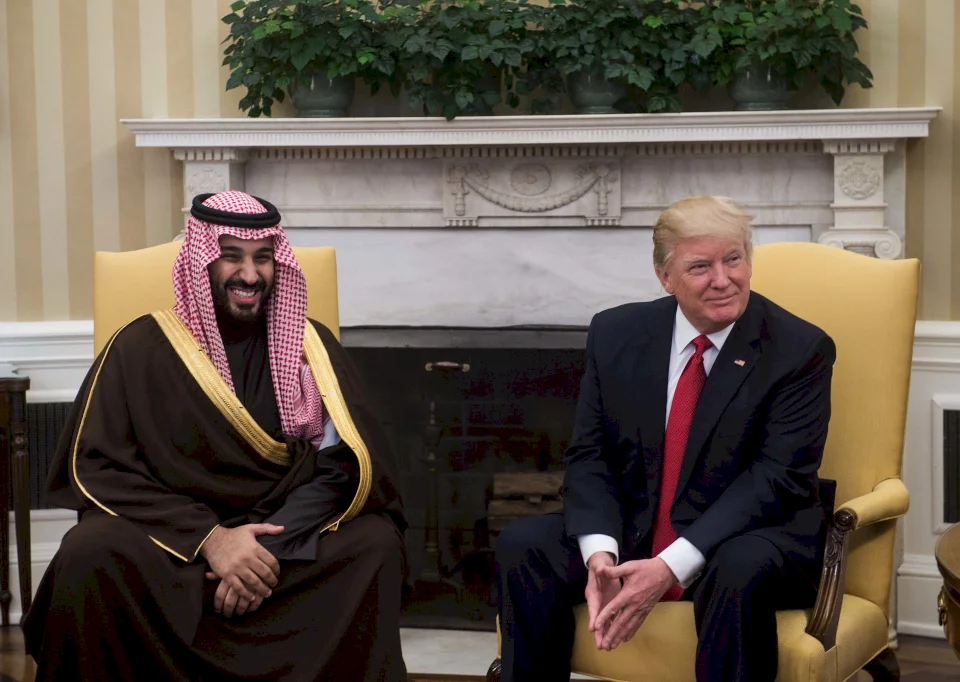
What Does the Classification of Saudi Arabia as a 'Major Non-NATO Ally' Mean?
SadaNews - In a move that reflects the depth of strategic relations between the United States and the Kingdom of Saudi Arabia, U.S. President Donald Trump officially announced the classification of Saudi Arabia as a "Major Non-NATO Ally" (MNNA). With this announcement, Saudi Arabia becomes the twentieth country to officially receive the classification of "Major Non-NATO Ally," joining countries like Argentina, Australia, Bahrain, Brazil, Colombia, Egypt, Israel, Japan, Jordan, Kenya, Kuwait, Morocco, New Zealand, Pakistan, the Philippines, Qatar, South Korea, Thailand, and Tunisia.
This classification represents the highest level of military and security cooperation granted by the United States to a country that is not a member of NATO. The U.S. Congress has been granting this title since 1987 under Section 22 of U.S. law.
Advantages of Non-NATO Allies
A non-NATO ally receives several key privileges, including prioritization in obtaining advanced U.S. weaponry and military technology, as well as the ability to purchase or lease surplus U.S. military equipment at reduced prices or under favorable terms. This classification also allows the non-NATO allied state to participate in joint weapon development programs with the United States and receive U.S. funding for military research and development projects.
This classification also provides some advantages to the United States, as it permits the storage of U.S. military equipment designated for emergencies on the territory of the allied nation, in addition to facilitating joint military training and intelligence cooperation.
Saudi Arabia has effectively enjoyed most of these privileges for decades due to its long-standing strategic partnership with the United States; however, the official classification legally guarantees these privileges and shields them from fluctuations in U.S. administrations.
Difference from 'Mutual Defense Agreement'
Despite the similarity in wording between "Major Non-NATO Ally" and an ally under a "Mutual Defense Agreement," the difference between them is significant. Under the classification of "Non-NATO Ally," there is no American commitment to defend the allied country, whereas a mutual defense agreement entails a clear legal commitment to mutual defense, akin to Article 5 of the NATO Agreement, which obligates member states to defend any member nation that comes under military attack.
The nature of commitments under the classification of "Non-NATO Allied State" does not exceed close military and armament cooperation; however, under a Mutual Defense Agreement, it escalates to a commitment to send American forces to defend the signatory state.
Thus, the distinction lies in the fact that the classification of "Major Non-NATO Ally" is a "very advanced strategic partnership" in terms of armament, training, and cooperation, but it is not a "defensive alliance." Conversely, a "Mutual Defense Agreement" means that any attack on the signatory state is considered an attack on the United States itself, legally obligating America to intervene militarily.
Saudi officials state that this classification is a "significant step towards a comprehensive strategic partnership," while the U.S. State Department confirmed that it "reflects a long-term commitment to collective security in the region."

Occupation detains dozens of citizens and imposes a siege on Beit Omer

Israeli Anger Over Weitkov-Hayyah Meeting: Acknowledgment of Hamas's Status

What Does the Classification of Saudi Arabia as a 'Major Non-NATO Ally' Mean?

Currency Exchange Rates Against the Shekel on Wednesday (November 19)

Weather: Dry and Dusty Atmosphere with a Rise in Temperatures

فيديو:: عدد كبير من الشهداء والجرحى بغارة إسرائيلية على مخيم عين الحلوة جنوب لبنان

Document Reveals: Israel on the Path to Executing Palestinian Prisoners via Lethal Injecti...

